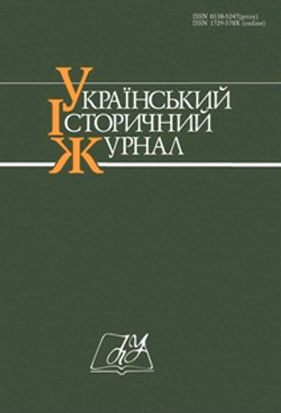Soviet Special Operation in Southern Bessarabia in September 1924: An Attempt to Demythologize the “Tatarbunar Uprising”
DOI:
https://doi.org/10.15407/uhj2024.05.174Keywords:
“Tatarbunar Uprising”, Bessarabian problem, Romanian-Soviet relations, Autono mous Moldavian Socialist Soviet Republic (AMSSR)Abstract
The goal is an attempt to look at the “Tatarbunar uprising of 1924”, which is an important episode of the Bessarabian problem, through the prism of a complex of diverse and contradictory concepts of both Soviet historiography and national historiographies of Romania and Moldova to develop concepts on which the national vision of events in the south of Bessarabia in 1924 will be based. The following tasks were formulated to achieve the set goal: resorting to the approaches of comparative studies and scientific criticism of sources and literature to carry out an analysis of the historiographic work of Soviet, Romanian, Moldovan, and Ukrainian historiography on the history of the “Tatarbunar uprising” and the “500 process” and rethink critically the most controversial problems, which, in our opinion, should be solved by Ukrainian historical science.
The methodological basis of the research was the approaches of scientific criticism and comparativistics. The application of a critical and comparativist approach allowed us to analyze the historiographic work on the “Tatarbunar uprising” and the “500 process”, to revise the concepts of the most controversial issues, and to start a discourse on the identified problems in view of the available sources and achievements of historiography from the point of view of the latest methods and approaches to historiography.
Scientific novelty. The scientific and critical analysis of a significant historiography collection of writings made it possible to outline the main problems of the “Tatarbunar uprising” and the “500 process” from the point of view of domestic historiography: the problem of the spontaneity of the uprising; national support; the social base and ethnicity of the insurgents; internationalization of the Bessarabian issue by involving Western intellectuals in the propaganda of the “500 process”; the connection between the uprising and the formation of the AMSSR; the number of participants and victims of events.
Conclusions. The “Peasant Tatarbunar uprising” of 1924 of the “oppressed popular masses” against the “landlords and Romanian boyars” was a myth of Soviet historiography. The “Tatarbunar uprising”, having failed in the short term, at the same, time succeeded in a certain way in the long term, turning into a Soviet myth about the “just struggle of the oppressed masses” of southern Bessarabia. Romanian and Moldovan historians also show considerable interest in the topic of the “Tatarbunar uprising” and the Bessarabian problem, which proves that Romania and Moldova have formed their own school of studying the Bessarabian problem in the last two decades. Unfortunately, we have to state that Ukrainian historiography did not develop proper concepts of the events in southern Bessarabia in 1924 and the myth of the “peasant Tatarbunar uprising” unconditionally entered the research of Ukrainian historians. Following the path of demythologizing the events in the south of Bessarabia in 1924 and resorting to the methods of comparativism and scientific criticism of sources and literature, we looked at the events of the “Tatarbunar uprising” and the “500 process” in the interrelation of military-political, social, ethnic and ideological factors. The proposed concepts of the interpretation of the “Tatarbunary uprising of 1924” and the “500 process” do not give us answers to all the questions we tried to solve — they only make up a complex and contradictory picture of the phenomenon, which received the name Tatarbunary 1924.


